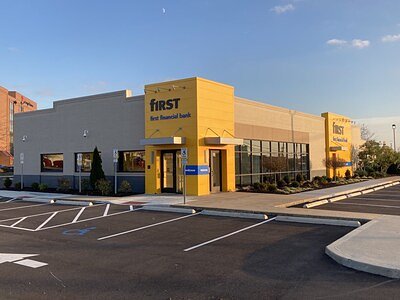
First Financial’s Midwest Push: Acquisition Signals Continued Regional Bank Consolidation
First Financial Bancorp’s acquisition of Westfield Bancorp expands its Midwest footprint and reflects a broader trend of consolidation in the regional banking sector. What does this mean for customers and the future of community banking?
First Financial’s Midwest Push: Acquisition Signals Continued Regional Bank Consolidation
By Susan Powell | November 03, 2025
Cincinnati-based First Financial Bancorp. completed its acquisition of Westfield Bancorp., Inc. and its subsidiary, Westfield Bank, FSB today, solidifying its position as a key regional player and signaling a continuation of the consolidation trend sweeping the community banking sector. The deal, which brings First Financial’s total assets to $20.6 billion, expands the bank’s reach into Northeast Ohio and offers a glimpse into the strategies banks are employing to navigate a rapidly changing financial landscape.
While financial details of the acquisition remain undisclosed, industry analysts suggest the move is a strategic play for First Financial to achieve greater scale and efficiency. “Regional banks are under increasing pressure to invest in technology and meet evolving customer expectations,” explains one financial sector analyst. “Consolidation allows them to spread those costs over a larger asset base.”
Expanding Footprint, Navigating a Competitive Landscape
First Financial has been aggressively expanding its presence throughout the Midwest in recent years, adding commercial lending capabilities in Northeast Ohio in 2023 and recently announcing an agreement to acquire BankFinancial Corporation in Chicago. The acquisition of Westfield Bank, with its established retail and commercial banking services, builds upon this momentum. The combined entity will now serve customers across Ohio, Indiana, Kentucky, and Illinois.
“This acquisition isn’t just about size; it's about strengthening our ability to serve our clients and communities,” stated Archie Brown, president and CEO of First Financial, in the official press release. The bank plans to leverage its broader range of solutions, including consumer banking, commercial lending, wealth management, and specialty finance, to attract new customers and deepen relationships with existing ones.
However, First Financial isn't operating in a vacuum. The Midwest banking sector remains highly competitive, with established players like KeyBank, PNC, and Huntington Bancshares vying for market share. “The regional banking landscape is becoming increasingly concentrated,” notes a local economist in Northeast Ohio. “Smaller banks are finding it difficult to compete with the resources and technological capabilities of larger institutions.”
Impact on Customers and Communities
While bank consolidation often raises concerns about reduced competition and potential job losses, First Financial appears to be taking a measured approach to integration. Initial reports suggest that the bank intends to retain the majority of Westfield Bank’s employees and maintain existing branch locations – operating under the ‘Westfield Bank’ name until a full conversion in March 2026.
“The immediate focus is on a smooth transition for Westfield Bank customers,” one source close to the deal revealed. “First Financial recognizes the importance of maintaining continuity of service and building trust within the local community.”
Despite these assurances, some customers express concerns about the potential impact on personalized service and local decision-making. “Smaller banks often have a better understanding of the needs of their communities,” commented a long-time Westfield Bank customer. “I worry that a larger institution will be less responsive to local issues.”
Analysts anticipate minimal disruption for First Financial’s existing clients, as the integration is expected to be seamless. However, the long-term effects on banking access and rates remain to be seen. One key concern is the potential reduction in branch networks as banks seek to streamline operations and reduce costs. A recent study by the Federal Reserve highlighted the disproportionate impact of branch closures on low-income and minority communities.
The Broader Trend of Consolidation
The acquisition of Westfield Bank is just one example of the ongoing consolidation trend in the regional banking sector. Several factors are driving this trend, including increasing regulatory burdens, the need for greater efficiency, and the pressure to invest in new technologies.
“The cost of compliance is a major challenge for smaller banks,” explains a banking regulatory expert. “They simply don’t have the resources to keep up with the ever-changing regulatory landscape.”
The rise of fintech companies is also putting pressure on traditional banks to innovate and adapt. Fintechs are disrupting the financial services industry with new technologies and business models, forcing banks to invest in digital transformation to remain competitive.
“Banks are realizing they need to embrace technology to stay relevant,” says a technology consultant specializing in financial services. “They’re either investing in their own technology or partnering with fintech companies to offer innovative products and services.”
The implications of this consolidation trend are far-reaching. While it may lead to greater efficiency and innovation, it could also result in reduced competition, higher fees, and less personalized service. Maintaining a vibrant and competitive banking sector is crucial for supporting economic growth and providing access to financial services for all communities.
As First Financial moves forward with integrating Westfield Bank, the bank's ability to balance efficiency with community engagement will be a key factor in determining the success of the acquisition and its long-term impact on the Midwest banking landscape.
